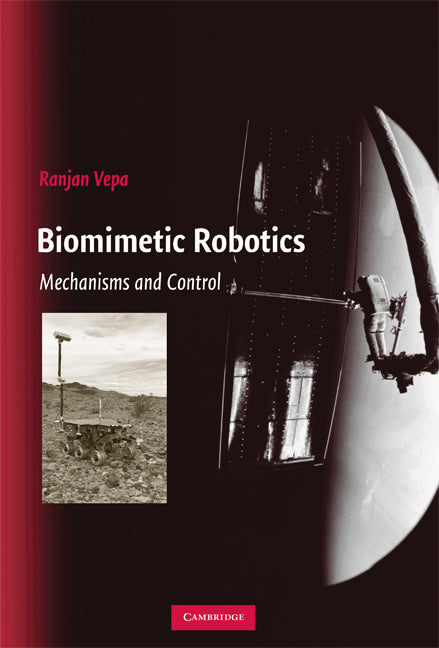Freshly Printed - allow 8 days lead
Couldn't load pickup availability
Biomimetic Robotics
Mechanisms and Control
This book is for a first course in robotics, especially in unmanned aerial or underwater vehicles.
Ranjan Vepa (Author)
9780521895941, Cambridge University Press
Hardback, published 26 January 2009
360 pages, 35 tables 122 exercises
26 x 18.4 x 2.4 cm, 0.88 kg
'… well-organized book … an excellent textbook for beginners in robotics and those interested in performing control tasks both on mobile robots and on manipulators, especially for aerial or underwater mechanisms. … introduces every aspect in a progressive way … exercises at the end of each chapter … help the reader to test and reinforce the theories and methods described. … The book is written in nontechnical language and gives many practical examples. … I definitely would recommend this book for the beginner in robotics and as a good reference text for the advanced student, because it covers in a deep but quick way the most necessary and interesting topics both for manipulators and for mobile robotics. The author recommends this book for students of aerospace and underwater robotics, but it is perfectly suitable for the mathematical study of robotics in general. We have to thanks Dr Vepa for his excellent summarizing work.' Artificial Life
This book is written as an initial course in robotics. It is ideal for study of unmanned aerial or underwater vehicles, a topic on which few books exist. It presents the fundamentals of robotics, from an aerospace perspective, by considering only the field of robot mechanisms. For an aerospace engineer, three dimensional and parallel mechanisms – flight simulation, unmanned aerial vehicles, and space robotics – take on an added significance. Biomimetic robot mechanisms are fundamental to manipulators, walking, mobile, and flying robots. As a distinguishing feature, this book gives a unified and integrated treatment of biomimetic robot mechanisms. It is ideal preparation for the next robotics module: practical robot control design. While the book focuses on principles, computational procedures are also given due importance. Students are encouraged to use computational tools to solve the examples in the exercises. The author has included some additional topics for the enthusiastic reader to explore.
1. The robot
2. Biomimetic mechanisms
3. Homogeneous transformations and screw motions
4. Direct kinematics of serial robot manipulators
5. Manipulators with multiple postures and compositions
6. Grasping: mechanics and constraints
7. Jacobians
8. Newtonian, Eulerian and Lagrangian dynamics
9. Path planning, obstacle avoidance and navigation
10. Hamiltonian systems and feedback linearization
11. Robot control
12. Biomimetic motive propulsion
Answers to selected exercises
Appendix: attitude and quaternions.
Subject Areas: Aerospace & aviation technology [TRP], Mechanical engineering [TGB], Mechanical engineering & materials [TG]


